If you’ve been reading this bog for a while, you’ll know that I occasionally keep tabs on what’s going on at some of China’s top universities. I haven’t done it in a couple of years or so, so I thought it was time for an update.
Figure 1 shows total expenditures at what I call China’s Big 8 universities (which is actually just the C9 League of universities—that is, the Chinese equivalent of Canada’s U15, only even more elite—minus the Harbin Institute of Technology, which tends not to be as free with its financial data), in billions of 2024 RMB (nb. the data for 2023 and 2024 is based on budgetary estimates rather than financial statements). Two big takeaways here: The first is that Tsinghua University, despite the collapse of Tsinghua Unigroup, has maintained and even extended its financial lead over the rest of the Chinese higher education system and it now takes up about a quarter of all the C9 institutions’ spending. The second is that Peking University has been financially overtaken by both Shanghai Jiao Tong and Zhejiang University.
Figure 1: Total Expenditures at China’s Big 8 Universities, 2014-24, in Billions of 2024 RMD
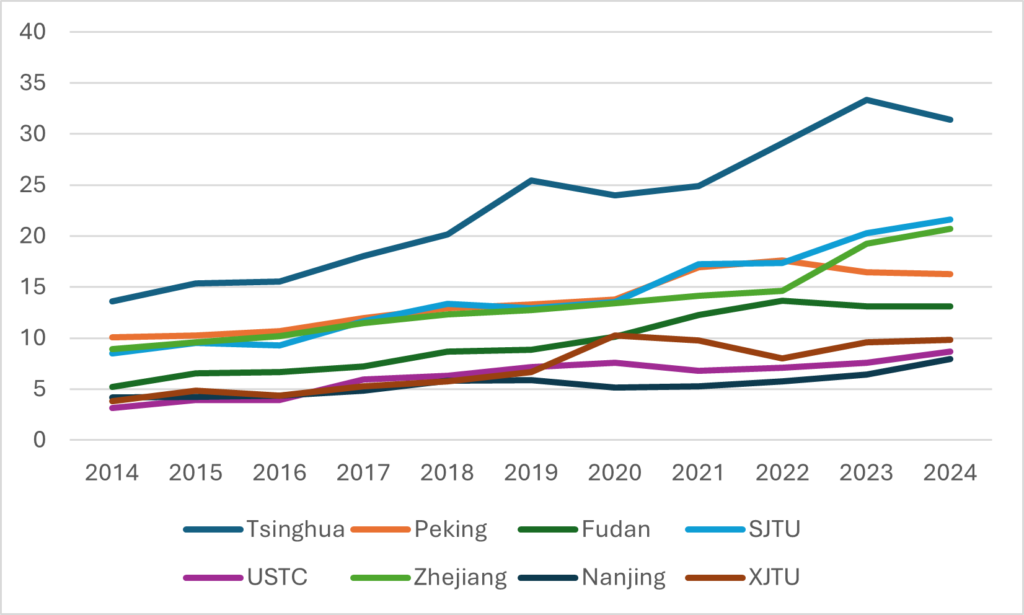
Figure 2 looks at how these same institutions are budgeting in 2024 compared to what they actually spent in 2020. And what you can see is that across the Big 8, planned expenditures are up a hefty 33% over just 4 years, and much more at some institutions. Xi’an Jiao Tong, however, is budgeting 4% less in 2024 than it spent in 2020, which indicates a wide dispersion around the main.
Figure 2: Change in Total Expenditures at China’s Big 8 Universities, 2020-24, in Billions of 2024 RMD
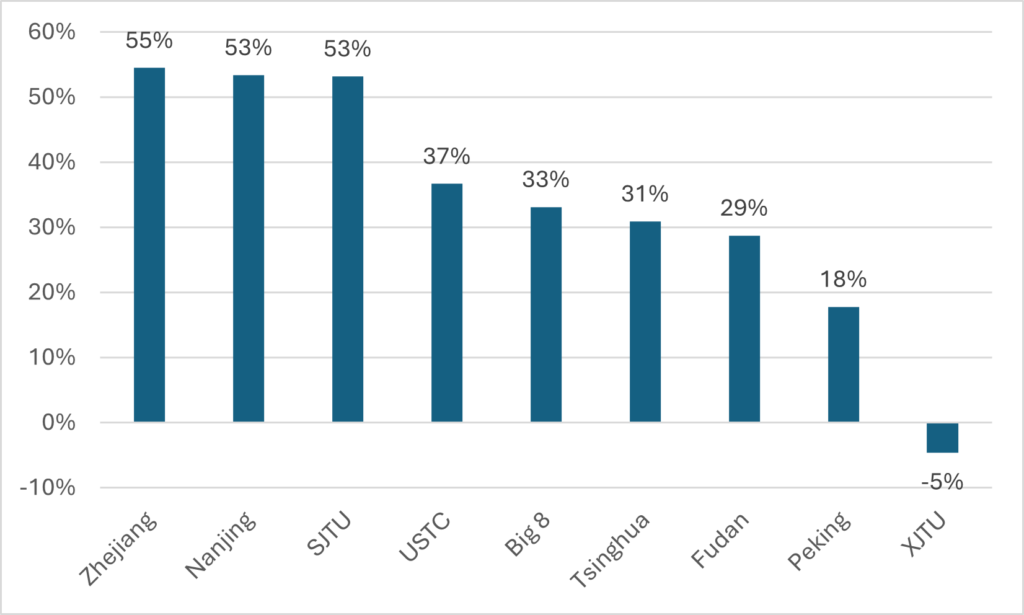
Wow, you’re thinking, those Chinese government excellence programs must really be working! So much public money is driving education and innovation. Except…no. Figure 3 shows the increase in real anticipated government financing in 2024 over 2020. Across the Big 8, the increase actually works out to a less than 1% increase per year. Those are practically Canadian levels of economic growth. This goes back to something I chatted about with Gerard Postiglione on the podcast a couple of weeks ago—under Xi Jinping, the Chinese state simply isn’t investing in higher education the way it used to.
Figure 3: Change in income from Government at China’s Big 8 Universities, 2020-24, in Billions of 2024 RMD
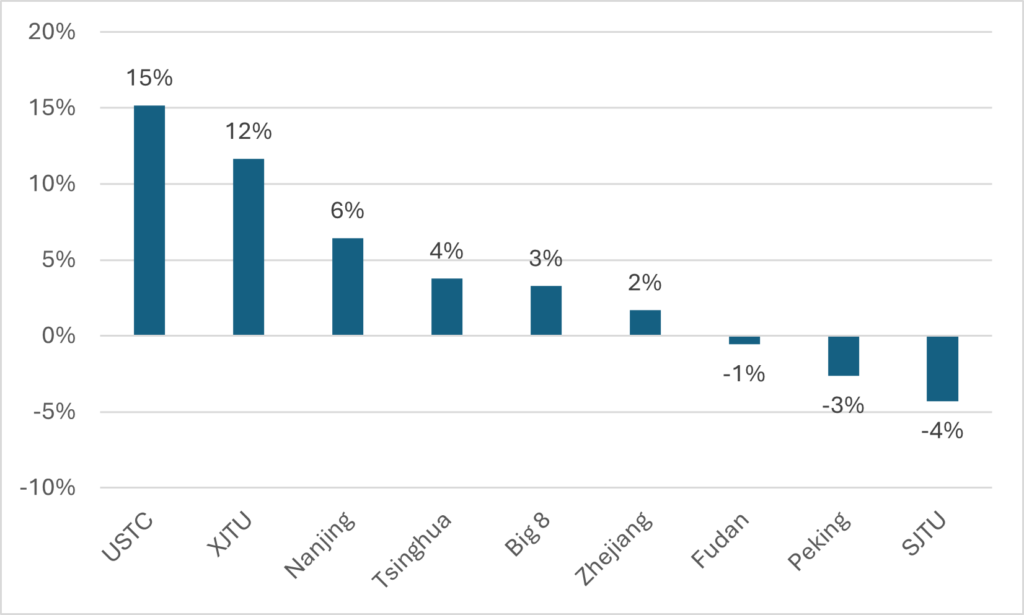
In fact, if you look at the income streams of the Big 8 universities, as below in Figure 4, you can see that in fact the big Chinese universities receive very little of their funding from the state (before you ask—no, I don’t quite know what the difference between “business” and “other” is, but if I had to guess I would say that “other” probably includes tuition fees, and a fair bit of “business” income are probably from state enterprises, which sort of blurs the line with the “government” category). Only at the University of Science and Technology of China does income from government top 40% of total income; across the Big-8 as a whole it is about 25% and at the three wealthiest institutions it is under 20%. Apart from the United States, there is no country where top public research institutions generate so much of their income from private sources.
Figure 4: Composition of Income at China’s Big 8 Universities, 2020-24, in Billions of 2024 RMD
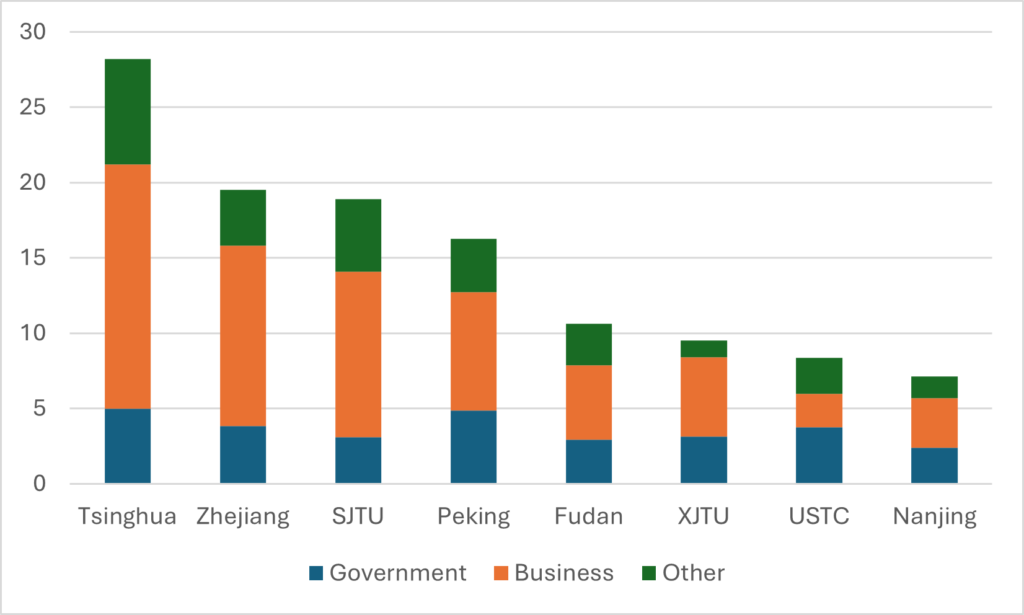
A last point here: how do these institutions compare to Canadian ones? Well, if you translate Chinese figures from 2022 (the last year for which we have data for both countries into Canadian ones at the current exchange rate (roughly 5.2 to 1), then you get something like Figure 5. Only Toronto really comes close to Tsinghua in terms of financial heft, and only UBC is comparable to Peking Shanghai Jiao Tong, Zhejiang, and Fudan. Waterloo, which is kind of a median U15 school financially, trails all of the Big-8. Note that if we used Purchasing Power Parity rather than exchange rates, all of the Chinese universities would look about 30% larger.
Figure 5: Total Expenditures at China’s Big-8 Universities (2022) vs Select Canadian Universities (2021-22) in Billions of Canadian Dollars at Current Exchange Rates
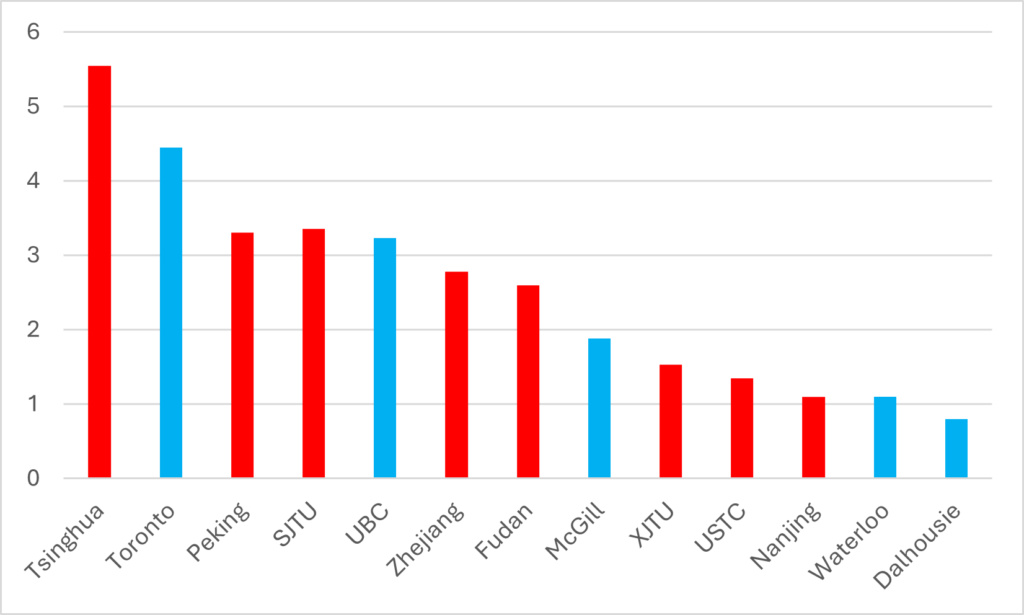
In any event, I have no big conclusion here other than that top Chinese universities are continuing to grow at a healthy clip, but that this growth is really not being driven in any way by direct government spending, which has more or less stopped growing.

 Tweet this post
Tweet this post
